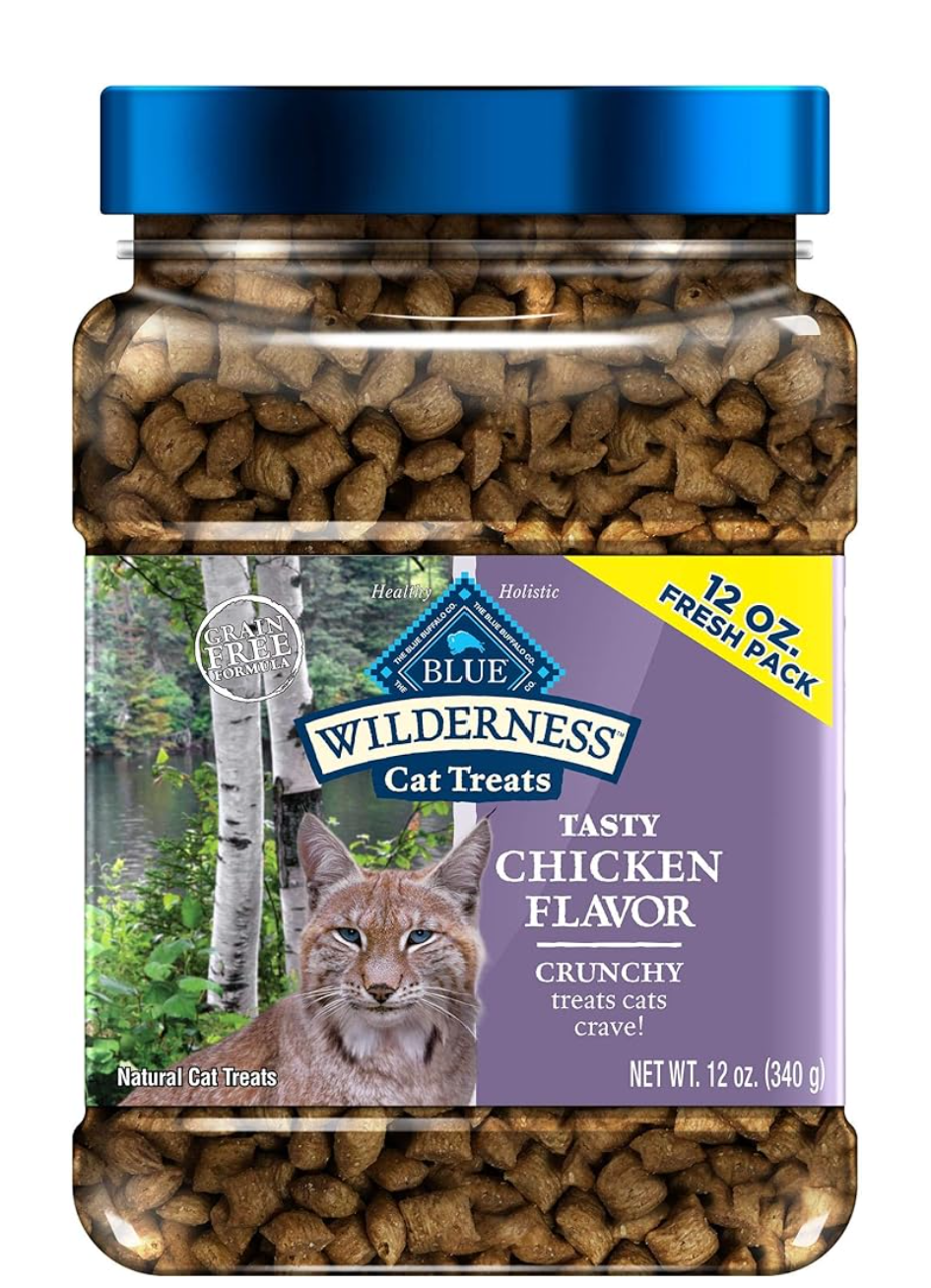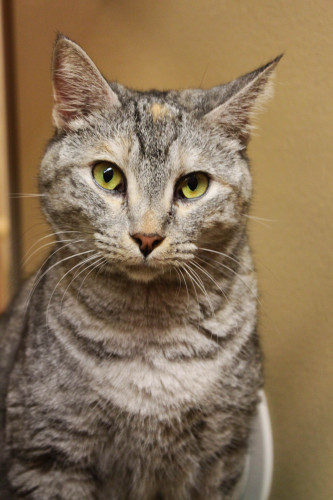Feline Panleukopenia – Definition, Symptoms, Diagnosis and Treatment
by Kritesh
(Delhi)
Feline Panleukopenia is a viral diseasecaused by the feline parvovirus (FPV), a single-stranded DNA virus of the Parvoviridae family. This virus is similar to canine parvovirus. This disease is sometimes referred to as feline infectious enteritis or feline distemper.The name panleukopenia came from the fact that most cats developed severe leukopenia when they got this disease, but this doesn’t happen in all cases.
FPV is highly contagious to all domestic and wild members of the Felidae family and has a high morbidity and mortality rate. Virus is shed in all body secretions, but the most common form of transmission of this disease is by fecal-oral transmission. Intrauterine infection may also occur. The virus dissemination may prevail for several weeks after recovery.
Transmission occurs by contact with infected animals, contaminated environment or fomites. Vehicles for exposure include contaminated litter trays, clothing, shoes, hands, food dishes, bedding and cages.
Clinical findings of FPV infection in cats are similar to those associated with canine parvovirus infection.FPV is highly contagious and has an affinity for the rapidly dividing cells of lymphoid tissue, bone marrow and intestine. Infection of lymphoid tissues and concurrent lymphocyte depletion causes immunosuppression.
Viralreplicationin the intestinal cells are responsible for the enteritis. The development of septicemia is easily achieved bythe destruction of the intestinal barrier in a young animal with a debilitated immune system. In prenatal and early neonatal infections, the cerebrum, cerebellum, retina, and optic nerves are also commonly infected, resulting in clinical abnormalities.
Symptoms and Clinical Signs
The incidence of this disease is higher in unvaccinated kittens less than 12-16 weeks of age. There is no sex or breed predisposition. FPV is not common in adult cats, due to the high prevalence of FPV antibodies in the cat population, but they may present a subclinical form of the disease. The highest morbidity and mortality occurs between 3 and 5 months of age.
Early in utero infection may result in abortion, stillbirthor fetal mummification. Kittens infected later in utero or shortly after births often appear normal until they start to walk. When they do, several degrees of ataxia, incardination, intention tremors, broad-based stance and falling are common. Affected kittens have a normal mental status. Some may have seizures, behavioral abnormalities or postural reaction deficits accompanied by a normal gate.
Generalized infection in young unvaccinated cats is the most common form of FPV disease. Severe disease may result in the death of the kitten. In less severe cases they may present fever, anorexia and depression. Vomiting unrelated to eating may also be present. Diarrhea is a common but not consistent finding. The intestines may be painful and feel thickened during abdominal palpation. In complicated cases, bloody diarrhea, icterus and severe dehydration may develop.
Diagnosis
• Clinical Signs: Acute cases of the disease must be differentiated from intoxication or foreign body ingestion, so careful history taking is really important. Abdominal radiographs as well as fecal examination for parasites should be performed to rule out intestinal obstruction or intestinal parasites. Clinical signs may also be compatible with acute toxoplasmosis (toxoplasmosis is often accompanied by respiratory signs, which may be helpful in differentiating between the two diseases). Negative feline leukemia virus status also should be confirmed.
• Complete Blood Count (CBC): Severe leukopenia is a consistent finding on the CBC. Neutropenia and lymphopenia may also be present. Leukocytosis is often found in the recovery phase;
• Canine Fecal Parvovirus Antigen Testing: ELISA kits can detect FPV antigen (but they have imperfect sensitivity);
• Biochemistry Profile and Electrolytes: These tests will not diagnose panleukopenia but will help to identify secondary problems that require monitoring and treatment;
• Fecal Examination: Stool should be examined for the presence of parasites because they may complicate the clinical course of panleukopenia;
• Retroviral Testing: Cats of any age suspected of having FPV should be tested for Feline Leukemia Virus and Feline Immunodeficiency virus;
• Polymerase Chain Reaction (PCR) Testing: In specialized laboratories offer PCR testing of whole blood or feces. These are not commonly used.
Treatment
The treatment for this pathology is mainly supportive. Fluid therapies, control of gastrointestinal signs, antimicrobial therapy, ion control, maintenance of glycaemia, are the basis of this treatment. There is no specific antiviral therapy, so the objective of this treatment is to provide the kitten with the support therapy they need until the immune system is able to overcome the infection. It is important to locate the signs of stress and ensure proper steps to reduce the stress of your cat. Here are some treatments that might help:
• Fluid Therapy: Intravenous fluid therapy is used to provide maintenance needs and correct ongoing losses due to vomiting and diarrhea. Subcutaneous fluids can also be used in the mildest cases;
• Antibiotics: Intravenous, broad-spectrum antimicrobial therapy (e.g. ampicillin, cephalosporins, ticarcillin, or ticarcillin/clavulanate) should be used due to leukopenia and the high risk of systemic bacterial infections;
• Parenteral Treatment: Oral antibiotics should be avoided initially because of vomiting. Eliminating oral intake of food and water decreases the amount of vomiting and slows replication of intestinal cells in the gastrointestinal tract, which is needed for viral replication. Water should not be reintroduced until the kitten is 24 hours without vomiting. Initially, small amounts of water should be offered. If the kitten doesn’t vomit for the next 24 hours, small amounts of a bland food (commercial GI diet) may be introduced. If feedings are tolerated, the amount should be increased gradually. After the patient is consuming normal amounts of food, a slow transition over approximately a week should be made to his regular maintenance diet;
• Anti-emetics: Metoclopramide is usually the drug of choice in these cases. Newer anti-emetics like maropitant and ondansetron are also being used;
• Monitoring Body Temperature: Kittens may present with fever in an initial phase and they may become hypothermic due to fluid loss and endotoxemia, that’s why it is important to monitor body temperature frequently;
• Passive immunotherapy: In dogs, administration of lyophilized serum from hyperimmune dogs decreases morbidity associated with canine parvovirus infection. Although data from cats are not available, the same principle probably applies because the pathogenesis is similar to the one in dogs.
Prevention
Panleukopenia virus vaccine is typically administered in combination with feline herpesvirus-1 (FHV-1) and feline calicivirus (FCV). Initial vaccinations for nursing kittens generally begin at 8-9 weeks of age. Kittens should receive two of these vaccines, 3 to 4 weeks apart, with at least one dose after 12 weeks of age, because colostral antibodies may interfere with vaccination up to this age.Protection with inactivated vaccines does not consistently occur until 3 to 7 days after the second vaccination took place.
After the first series of vaccinations is completed, a booster should be given one year after, with subsequent immunizations every 3 years.
Queens should be vaccinated before pregnancy; if vaccinated during gestation, they should receive only inactivated (killed virus) products because modified live vaccines may infect the fetal or neonatal cerebellum. The inactive vaccine is safe in kittens younger than 4 weeks of age.
If Feline Panleukopenia is diagnosed in a household, a disinfection with 1:32 dilution of bleach should be performed on all cages, bowls, litter pans and floors. Any objects that are hard to disinfect should be discarded.
Panleukopenia is a serious disease. If you suspect that your cat may have been infected with this disease contact your veterinarian.
Healthy Cat Treat

Subscribe to Our Love Cats Digest e-zine
"A cat improves the garden wall in sunshine, and the hearth in foul weather." - Judith Merkle Riley
Marketing Strategies by










